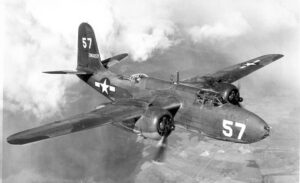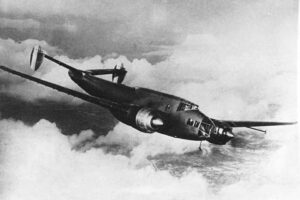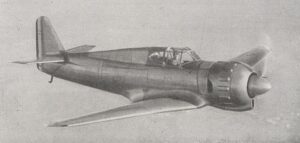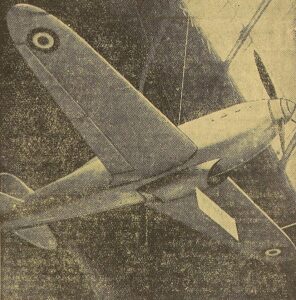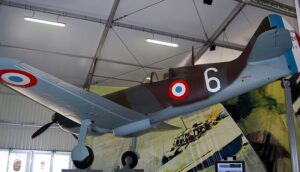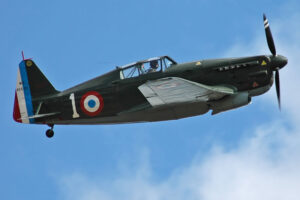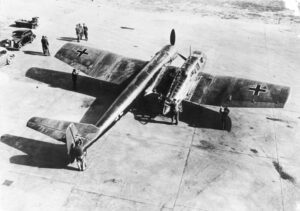Time Period: World War II
Country of Origin: Germany
Type: Interceptor
Manufacturer: Messerschmitt AG
Messerschmitt Me 163 Komet Aircraft Overview
The Messerschmitt Me 163 Komet was a German rocket-powered fighter aircraft used during World War II. It was designed to intercept Allied bombers at high altitudes, and it was one of the fastest aircraft of the war.
The Me 163 Komet was designed by Alexander Lippisch and developed by Messerschmitt in the mid-1940s. It was a single-seat, low-wing monoplane with a retractable skid landing gear and a unique tail assembly, which included two vertical stabilizers and rudders. The aircraft was powered by a rocket engine, the Walter HWK 109-509, which provided a maximum speed of around 1,000 km/h (621 mph).
The Komet was armed with two 30mm MK 108 cannon, and it was designed to make hit-and-run attacks on Allied bombers at high altitude. However, its short range and limited endurance meant that it was only effective for a few minutes of flight time.
Despite its speed and advanced technology, the Komet had several shortcomings. It was difficult to fly and had a high accident rate due to the rocket engine’s tendency to flame out or explode. Its armament was also limited, and it was vulnerable to attack from Allied fighters.
Overall, only a small number of Me 163 Komets were produced, and they saw limited action during the war. However, the Komet remains an important aircraft in the history of aviation due to its advanced technology and unique design.
Messerschmitt Me 163B-1a Specifications
- Crew: 1
- Capacity: (Me 163S + 1)
- Length: 5.7 m (18 ft 8 in)
- Wingspan: 9.3 m (30 ft 6 in)
- Height: 2.5 m (8 ft 2 in)
- Wing area: 19.6 m2 (211 sq ft)
- Empty weight: 1,905 kg (4,200 lb)
- Max takeoff weight: 4,309 kg (9,500 lb)
- Fuel capacity:
- C-Stoff (fuel) 468 kg (1,032 lb)
- T-Stoff (oxidiser) 1,550 kg (3,420 lb)
- Powerplant: 1 × Hellmuth Walter Kommanditgesellschaft HWK 109-509A-2 bi-propellant liquid-fuelled rocket motor, 14.71 kN (3,307 lbf) thrust maximum; 980 N (220 lbf) minimum, fully variable
Messerschmitt Me 163B-1a Armament
- Guns:
- 2 × 30 mm (1.181 in) Rheinmetall Borsig MK 108 cannon with 60 rpg (B-1a)
-
-
- or
-
-
- 2 × 20 mm (0.787 in) MG 151/20 cannon with 100 rpg (Ba-1 / B-0 pre-production aircraft)
Messerschmitt Me 163B-1a Performance
- Never exceed speed: 900 km/h (560 mph, 490 kn) at all altitudes, sea level to 12,000 m (39,000 ft)
- Flap limiting speed: 300 km/h (190 mph; 160 kn)
- Rotate speed at take-off: 280 km/h (170 mph; 150 kn)
- Best climbing speed: 700–720 km/h (430–450 mph; 380–390 kn)
- Endurance: 7.5 mins powered
- Rate of climb: 81 m/s (16,000 ft/min)
- Time to altitude: From standing start
- 2,000 m (6,600 ft) in 1.48 min
- 4,000 m (13,000 ft) in 2.02 min
- 6,000 m (20,000 ft) in 2.27 min
- 8,000 m (26,000 ft) in 2.54 min
- 10,000 m (33,000 ft) in 3.19 min
- 12,000 m (39,000 ft) in 3.45 min
- Wing loading: 209 kg/m2 (43 lb/sq ft) at a maximum take-off weight
- Thrust/weight: 0.42
Messerschmitt Me 163 Komet Image Gallery
More Messerschmitt Aircraft
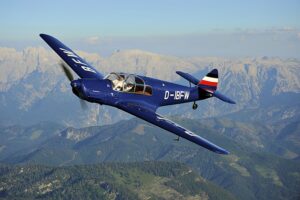
Messerschmitt Bf 108 Taifun
The Messerschmitt Bf 108 was a German single-engine aircraft developed by Bayerische Flugzeugwerke in the 1930s.
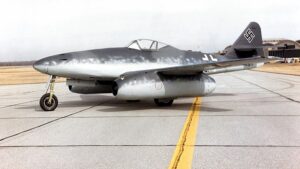
Messerschmitt Me 262 Sturmvogel
The Messerschmitt Me 262 Sturmvogel is a fighter bomber aircraft and the world’s first jet-powered fighter aircraft.
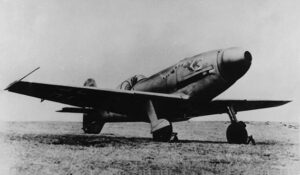
Messerschmitt Me 209
The Messerschmitt Me 209 was a German single-engine racing aircraft designed to break speed records and used as a propaganda tool in WW2.
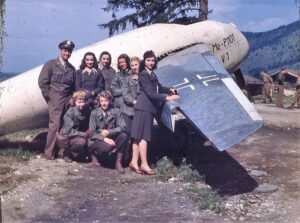
Messerschmitt P.1101
The Messerschmitt P.1101 was a single-seat jet fighter developed by Messerschmitt for the Third Reich during the Second World War.
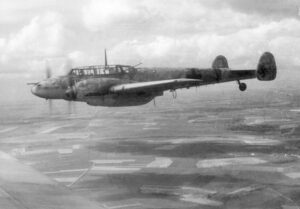
Messerschmitt Bf 110
The Messerschmitt Bf 110 was a German twin-engine destroyer fighter-bomber developed in Nazi Germany in the 1930s and used in WW2.
More Luftwaffe Aircraft
The Luftwaffe, the German air force during World War II, fielded a diverse range of aircraft that played critical roles in the conflict. These aircraft encompassed fighters, bombers, reconnaissance planes, transport aircraft, and more. Explore others:
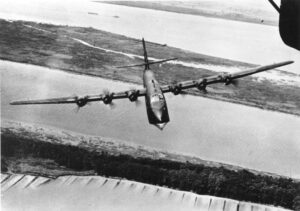
Blohm & Voss BV 222 Wiking
The Blohm & Voss BV 222 Wiking was a large six-engined German flying boat originally developed during the late 1930s as a commercial venture.
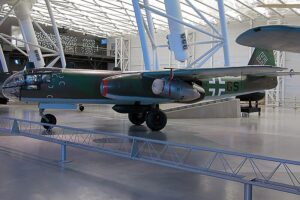
Arado Ar 234 Blitz
The Arado Ar 234 was a German jet-powered bomber produced by Arado Flugzeugwerke and used during the last years of WW2.
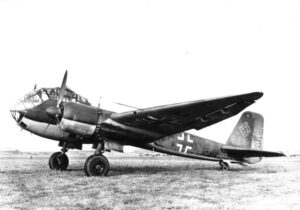
Junkers Ju 188 Rächer
The Junkers Ju 188 Rächer was a German high-performance medium bomber used by the Luftwaffe during World War II.
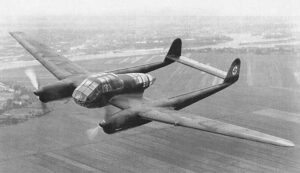
Focke-Wulf Fw 189 Uhu
The Focke-Wulf Fw 189 Uhu is a German twin-engine, three-seat tactical reconnaissance and army cooperation aircraft used during WW2.

Messerschmitt Bf 110
The Messerschmitt Bf 110 was a German twin-engine destroyer fighter-bomber developed in Nazi Germany in the 1930s and used in WW2.



